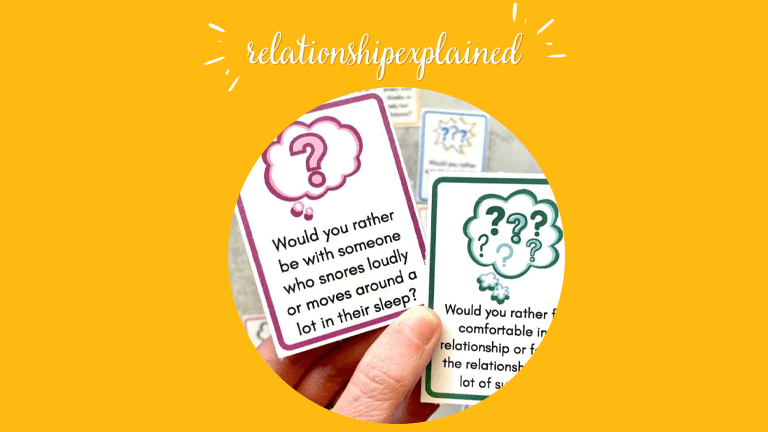Long-Distance Situationship: The Ultimate Guide
A long-distance situationship is a type of casual relationship that arises due to conditions like relocation, traveling, or online connectivity, among other things. However, such relationships are difficult to sustain, and if there are persistent issues, then it is better to end the situationship. These can include trust issues, lack of personal growth or commitment, emotional disconnect, and others.
In today's interconnected world, long-distance relationships have become increasingly common. But there is another intriguing dynamic that deserves attention - the long-distance situationship.
It is defined as an ambiguous connection between two individuals who share a bond without the commitment and exclusivity of a traditional relationship. That’s why a long-distance situationship walks a fine line between romance and friendship. Unlike a relationship, a situationship lacks clear expectations, defined boundaries, and future prospects, often leaving individuals in a state of uncertainty.
This guide explores the complexities of long-distance situationships, offering valuable insights and practical tips for those seeking to navigate this intricate territory with clarity and self-awareness.
Why Do People End Up In Long Distance Situationships?
There can be several reasons for a long-distance situationship to flourish, and these have been discussed below.
1. Unexpected Relocation
Life sometimes takes unexpected turns, such as job opportunities in a different city or country, educational pursuits in a distant institution, or family obligations that require individuals to relocate. These sudden changes can disrupt existing relationships, leaving couples in a long-distance situationship unintentionally.
The individuals involved may be deeply committed to each other but find themselves physically separated due to circumstances beyond their control. The initial intention may have been to maintain the relationship despite the distance. However, the lack of proximity and challenges of maintaining an emotional connection can lead to a more ambiguous and uncertain situationship dynamic.
2. Online Connections
The digital era has revolutionized how people connect, leading to the emergence of virtual relationships that transcend physical boundaries. Online dating platforms, social media, and chat applications have made it easier than ever to meet and form connections with individuals from different parts of the world.
In such cases, the long-distance situationship may arise due to the inherent limitations of geographical distance. That can leave individuals in a state of uncertainty about the future and the potential for the relationship to progress beyond the virtual realm.
3. Traveling Or Studying Abroad
Immersive experiences like studying abroad or embarking on extensive travel can create unique situationships. Being in an unfamiliar environment often leads to encounters with individuals from diverse backgrounds, sparking connections that may evolve into long-distance situationships.
The allure of meeting someone in a foreign land and the intense shared experiences can foster deep emotional connections. However, the awareness of an eventual separation due to the temporary nature of these experiences often prevents the situationship from transitioning into a traditional committed partnership.
4. Reluctance To Commit
Some individuals enter long-distance situationships as a means of avoiding commitment or the pressures associated with a traditional relationship. They may enjoy the romantic connection, intimacy, and support that comes with a relationship but hesitate to invest in a committed partnership fully.
Fear of potential conflicts, sacrifices, or responsibilities that accompany a formal relationship can push individuals towards a more ambiguous situationship arrangement. In such a scenario, they can enjoy the benefits of a connection while maintaining personal freedom and independence.
5. Fear Of Losing Connection
Individuals who genuinely care for each other may choose to enter a long-distance situationship to maintain a connection when physical proximity is no longer possible. External factors such as career opportunities, educational pursuits, or family obligations may force a temporary or prolonged separation.
In such cases, individuals may opt for a situationship rather than ending the connection altogether. They may believe that their bond is strong enough to withstand the challenges of distance, even if it means sacrificing the certainty and stability that a traditional relationship offers.
6. Previous Relationship Trauma
Past relationship traumas can leave individuals hesitant to commit to a traditional relationship. Negative experiences such as heartbreak, betrayal, or emotional abuse can create deep-seated fears and insecurities that make it challenging to trust and fully invest in a new relationship.
In such scenarios, long-distance situationships offer a connection without vulnerability, potential fear of past experiences, and the responsibility of investing in a relationship. Physical distance can serve as a protective barrier, allowing individuals to explore their feelings and gradually build trust without the immediate pressures of a committed relationship.
7. Career Priorities
Ambitious career goals often require individuals to prioritize professional growth, which can result in geographical separation from their partners. The pursuit of career opportunities in different cities or countries may require individuals to temporarily or permanently relocate.
When that happens, individuals may choose to maintain a connection through a long-distance situationship. This allows them to pursue their personal and professional aspirations while also navigating the complexities of a relationship. Such an arrangement offers a compromise between personal goals and maintaining a connection, albeit with the inherent challenges posed by distance.
8. Lack Of Relationship Labeling
Some people prefer the freedom and flexibility that comes with undefined relationships. They may enjoy the intimacy, shared experiences, and support that a connection offers but feel restricted by the expectations, commitments, and societal norms associated with labeling a relationship.
As such, these individuals may opt for a long-distance situationship where there are no formal labels or predefined expectations. This helps them to navigate the connection at their own pace and without the pressure of conforming to traditional relationship norms.
9. Slow Transition From Friendship
Many situationships arise when two friends develop deeper feelings for each other but are unsure about taking the leap into a full-fledged relationship. Distance may complicate this transition, making individuals hesitant to cross the boundary from friendship to a committed romantic partnership.
The fear of risking the friendship or the uncertainty about how the relationship dynamic might change can lead to a long-distance situationship as a middle ground. This allows individuals to explore their feelings while maintaining the familiarity and comfort of the existing friendship, albeit with added complexity due to the physical separation.
10. Exploration And Independence
Some individuals prioritize personal growth, self-exploration, and independence. They may feel a strong desire to discover their own identities, pursue individual passions, or explore new opportunities without the constraints of a traditional relationship. In such cases, a long-distance situationship can be appealing, as it allows for personal exploration while also maintaining a romantic connection with another person.
Such an arrangement provides the necessary freedom to grow individually while simultaneously navigating the complexities of a connection, albeit with the understanding that the situation may change as personal journeys progress.
When Should You End A Long-Distance Situationship?
Sustaining a long-distance situationship is never an easy decision, for it requires a lot of time and effort. Even then, there’s no guarantee that it may develop into a full-fledged relationship. Still, many people desperately cling to such a situationship in hopes of a better outcome.
However, that is not always a healthy thing to do. If the conditions of the relationship start to worsen, then it is a wise idea to end the relationship. That is why recognizing these conditions is important, for it can help individuals assess the health and viability of the relationship.
After all, it is important to prioritize personal happiness, emotional well-being, and growth when making a choice to move on from a long-distance situationship.
1. Lack Of Commitment
If one or both individuals in a long-distance situationship are unwilling to commit, it may be a sign that the relationship has reached its end. A lack of commitment can manifest as a reluctance to discuss the future, make plans together, or invest time and effort into building a solid foundation.
Without a shared commitment to the relationship, it becomes challenging to sustain a sense of security, growth, and progress. And that is why it is better to end the relationship without dragging things for a long time.
2. Communication Breakdown
Effective communication is crucial for the success of any relationship, and the same applies to long-distance situationships. If there is a consistent breakdown in communication or a lack of effort to maintain regular and meaningful communication, it may indicate a lack of investment/interest in the relationship.
When communication becomes strained, important discussions, emotional connections, and problem-solving become increasingly difficult. This leads to distance and disconnection between both individuals, thereby marking the end of a situationship.
3. Limited Quality Time Together
Long-distance situationships often involve limited physical time spent together. If the infrequent visits or virtual interactions are not providing enough fulfillment or are causing frustration, it may be a sign that the connection is not meeting your needs.
4. Different Relationship Needs
Each individual in a long-distance situationship may have different relationship needs and expectations. If these needs are consistently unmet or incompatible, it may be a sign that ending the situationship is necessary.
For example, one person may crave more physical intimacy and closeness than the distance allows, while the other may prioritize emotional connection and intellectual stimulation. The mismatch in relationship needs can lead to frustration, dissatisfaction, and an overall sense of imbalance. Recognizing these differences is important, for it may be an indication that the situationship is not meeting the needs of either individual.
5. Lack Of Shared Future
A lack of shared vision for the future can be a significant factor in deciding to end a long-distance situationship. If both individuals have different goals, aspirations, or plans that cannot be reconciled, it may be challenging to sustain the relationship without a common ground.
Divergent life trajectories can create a sense of uncertainty, unfulfilled desires, and an inability to make long-term plans. That ultimately leads to the realization that the situationship may not be feasible in the long run.
6. Unresolved Conflict
Conflict is a natural part of any relationship, including long-distance situationships. However, if such conflicts consistently go unresolved or lead to frequent misunderstandings and resentment, it may indicate that the relationship is not healthy for either party.
When conflicts persist without resolution, they can breed toxicity, erode trust, and hinder personal growth and well-being. That makes it difficult to maintain a sustainable and thriving relationship.
7. Neglected Personal Growth
While being in a long-distance situationship, it's important to prioritize personal growth and individual fulfillment. If one or both individuals feel held back from pursuing their own goals and aspirations, then the situationship will become a hindrance.
Neglected personal growth can lead to a sense of stagnation, resentment, and unfulfilled potential, making it difficult for both individuals to find happiness and satisfaction within the relationship. In that case, ending the situationship will be necessary to focus on personal growth.
8. Unhappiness And Emotional Drain
Ultimately, if the long-distance situationship consistently brings unhappiness, emotional exhaustion, or a feeling of being stuck, it may be time to consider ending the relationship. When efforts to improve the situation or find solutions are unsuccessful, prioritizing one's own well-being and happiness becomes crucial.
Prolonged unhappiness and emotional drain can take a toll on mental and emotional health, making it necessary to reassess the viability of the situationship. Therefore, you will need to make choices that prioritize personal well-being and growth.
9. Gut Feeling
Trust your instincts and listen to your gut feeling. If, deep down, you sense that the situationship is not right for you or that it has run its course, it's important to pay attention to those inner signals.
Conclusion
While long-distance situationships can offer unique opportunities that are different from traditional relationships, it is essential to recognize the conditions that may warrant ending such relationships.
When commitment, communication, trust, and emotional connection falter, and conflicts, divergent goals, or unmet needs persist, it may be better to terminate the situationship. Acknowledging these signs can help individuals make informed decisions that prioritize their long-term happiness.
However, it is important to note that when done successfully, long-distance situationships can be fulfilling and rewarding. In such cases, the situationship becomes a source of strength and resilience, proving that love and connection can transcend physical distance.
Ultimately, the key lies in recognizing when a situationship is no longer viable and having the courage to pursue a path that leads to personal fulfillment and satisfaction.













